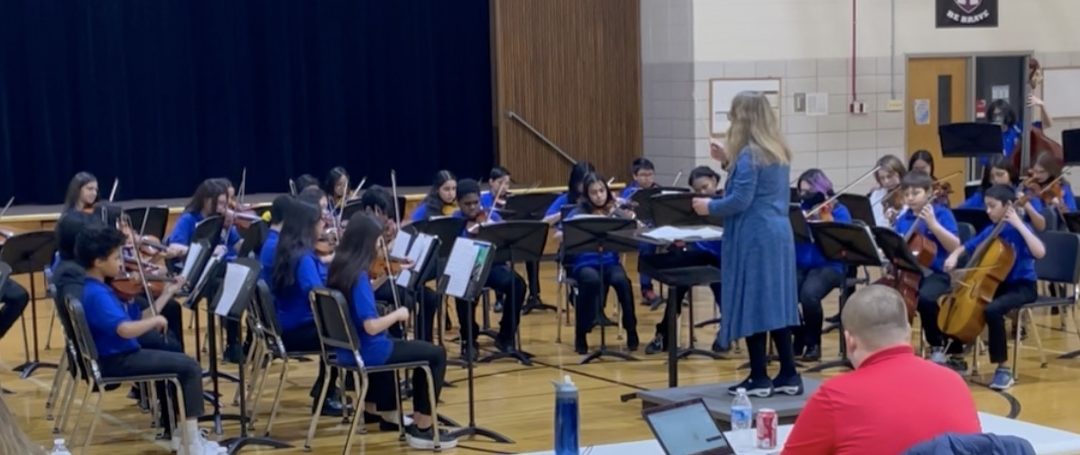“String students need to read music. They will never function in an orchestra without this skill.” -Every Music Teacher
While this statement is true, getting to that point is a challenge. When we teach reading in English/Language Arts, we allow students to point at picture books and tell stories in their own words. This is part of the “learning to read process.” We also allow students to memorize books and recite them.
What parent hasn’t been super excited with their child when their child recites a favorite book by heart? What parent has said to their child they “aren’t really reading” when their child recites a book from memory? Aren’t we happy they’re engaging with the written word? Why can’t we be excited when our orchestra students do the same type of thing?
With music reading in school, it can be the same type of process as young children learning to read English. At the elementary school, music students have limited time for lessons. In my school, students get one 30-minute lesson per week plus an after-school rehearsal. Unless a student has a musical background, they are unlikely to become fluent note readers in that amount of time. I have found that writing some note names in parts does not lead to illiterate musicians later. As long as much of the writing is done by students, they can concentrate on learning to play their instrument first. And they can learn to read music later.
Once students are in middle school they have 3 to 5 rehearsals a week. The reading of music comes much more naturally.
According to Ben Maloney who wrote a blog on note reading,
“Some will become proficient at reading sheet music after two or three months of consistent practice, but it may take a decade to really get to grips with it. On average, it takes a beginner eighteen months to two years to reach that level.”
I have found this length of time to be typical in a public school setting.
Here is a Cool Tool in Finale
My students have struggled to play simple material. I found that I could rewrite the music in Finale and have the names of the notes inside the note head. Because the note names are small, students have to look closely. This helps them to focus on the note heads.
Some students have trouble perceiving up, down, and repeating patterns of notes. They tend to look at the direction of the stems as more important than the note heads. There is even a type of music reading dyslexia called “dysmusica.” I have seen many students struggle with what to look at when they try to decipher music.
Dysmusia – However, it was not until 2000 that a clear concept of musical dyslexia, or ‘dysmusica’, was first introduced by the neurologist Neil Gordon
Reading Notes is Hard
Here is a partial list of musicians who don’t read music.
• Jimi Hendrix (1942 – 1970) …
• Stevie Wonder (1950-) …
• Hans Zimmer (1957-) …
• Danny Elfman (1953-) …
• Taylor Swift (1989-) …
• Bob Dylan (1941-) …
• Aretha Franklin (1942 – 2018) …
• The Beatles
There is a LOT to learning to read music. Since our goal is to make music accessible for all, let’s look at ways to do this. And let’s not make fluent music reading a pre-requisite for playing an instrument. Music reading is an important skill. But it is not the only important skill.
Let’s show patience, understanding and creativity as we teach this important skill. Flashcards, note games, writing note names in parts, and re-writing parts can help with this. Let’s do this for our students. We need to have a more musically literate populace. Patience in teaching note-reading can help!
I know this topic can be controversial. Let me know what you think about this topic.
